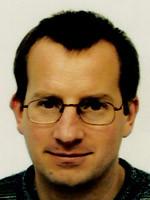
Research Professor
Research Professor
In 2000 I decided to pursue an academic career following on from studying with the Open university whilst running a small family business. This lead to undertaking my PhD at Corpus Christi college Cambridge (2001 - 2005)looking at Sum Frequency spectroscopy of SDS and PEG. I graduated in 2005 and started working in the Paul Davies group as a post doctoral researcher. I am currently a fully independent researcher in the department holding the position of Research professor.
Research Interests
SFG spectroscopy of interfacial systems.
Primarily I am looking at the effect of small friction modifying additives for use in engine oil. This work involves the use of both linear and non linear surface spectroscopy. Particularly Sum frequency generation spectroscopy. This provides an ideal method for looking at the adsorption of friction modifiers onto metal surfaces in-situ and in real time. It provides a unique surface specific spectrum of the interface with essentially no contribution from the overlying bulk phase. We currently have a picosecond SFG spectrometer supplied by Ekspla running at 50 Hz with a tuning range of 4000 cm-1 to 625cm-1 , complementing this is an SFG microscope. Most recently (2024) we have installed a 10KHz femto-second broadband SFG spectrometer with an operational range of 875cm-1 to 4000cm-1 This area of my work is directly funded by industry and is generally commercially sensitive.
In addition to the above I am interested in the structural characterisation of model lipid membrane systems. Most recently this has focused on the investigation of the oxidation of lipid membranes under Fenton chemistry. We have a particular interest in the fundamental structures adopted at the interface of the lipid membrane as it is deformed by the surface and by the procedures used to bind the lipid bilayer to the supporting substrate.
AFM-IR Microscopy
Following the purchase of a new Nano-IR AFM we have started to investigate more complex biologically related surfaces such as hair and red blood cell membranes. Photothermal AFM allows nanometer scale resolution for IR mapping and spectroscopy of surfaces allowing for the distribution of differing chemistries to be resolved at well beyond the diffraction limit for conventional IR microscopy.
Publications
- <
- 5 of 5
